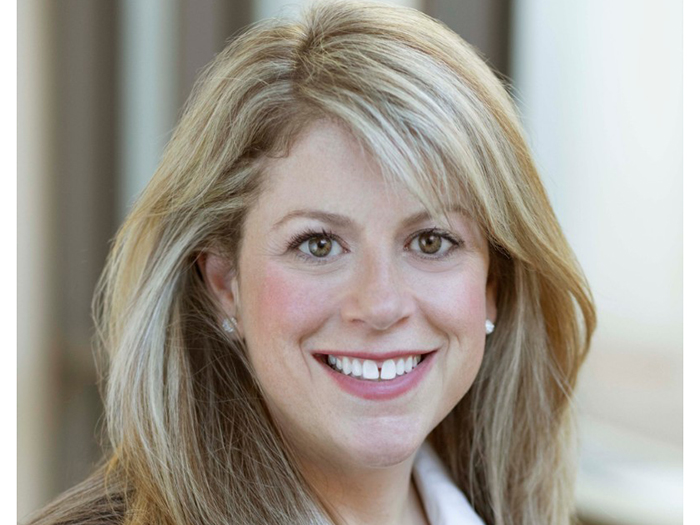Workers' Comp
The PBM Evolution

The impact of pharmacy spend on the bottom lines of workers’ compensation payers remains a concern, especially as the opioid epidemic rages on.
That is the case even though drug costs have stabilized somewhat over the past few years — increasing at a slower rate and in some cases remaining flat.
They rely heavily on their pharmacy benefit managers to help keep utilization under control and contain costs. But despite the crucial role PBMs fill — or perhaps because of it — questions have been raised concerning their place in the industry going forward.
PBMs first emerged in the late 1980s, filling the need for a way to keep rapidly rising drug prices in check.
Without a middle man to hold the pharmaceutical industry accountable to consistent pricing standards, there was little to prevent gross overpricing by manufacturers or to guarantee reliable prices from region to region. PBMs provided stability and predictability in the market, and eased the billing process for payers by unifying vast networks of pharmacies.
Serving a primarily financial purpose, PBMs secured transactional cost savings for health plan payers through the creation of pharmacy networks and rebates from pharmaceutical manufacturers.
“When PBMs first started, they were primarily focused on financial and administrative aspects, like reducing the amount of paper billings that occur, and providing transactional savings,” said Rey Quinones, vice president of product development for Helios.
“The second thing they provided was access. By establishing pharmacy networks, PBMs helped ensure injured workers had access to their prescribed, claim-related medications.”
Move to Clinical Management
But it wasn’t long before PBMs started to fill a larger, more critical role for their clients, expanding their horizons and shifting into the clinical side of pharmacy cost management.
“They have absolutely evolved because they had to,” said Cheryl Larson, vice president of the Midwest Business Group for Health, a nonprofit business coalition comprised primarily of human resource and health benefit professionals.
Whether independent or owned by a health plan, PBMs developed and began to offer more clinical services in order to stay relevant and competitive.
“There were clinical initiatives taking place within health plans, or maybe through specialty pharmacy programs, or employers were hiring disease management companies to help with adherence,” Larson said, “so in order for [PBMs] to be more relevant, they had to move in the direction of clinical management.”
Those clinical management services include utilization review conducted by a physician or pharmacist, and recommendations for interventions on high-risk claims, such as sending educational materials to the claimant, communicating directly with a prescribing physician, assigning a nurse case manager, or ordering urine drug monitoring.
“PBMs’ clinical interventions were not very robust 10 years ago. There were weak utilization controls,” said Ron Skrocki, vice president of product management and development at GENEX Services. “But PBMs have to be the backbone, the guardians of the intervention process, and interventions have now become more tangible.”
Even formularies, which began as a tool to limit prescriptions to certain brands or types of drugs, have become tailored to fit more specific clinical needs.
“We created workers’ compensation-related formularies,” Quinones said. “In group health, you have formularies that are somewhat indifferent to where you are, what line of business you’re in — the list of medications covered is very broad. In workers’ compensation, the medications you cover are really more focused, and more individualized because each claim is unique.”
At Helios, a team of pharmacists determined what medications were most commonly prescribed for different types of workers’ comp injuries, and broke them down into categories by time after injury. For instance, a medication needed in the first six weeks of treatment may not be appropriate later on.
“The level of accountability is evolving and we’re starting to see the PBM model evolve to meet the needs of employers as key purchasers.” — Cheryl Larson, vice president, Midwest Business Group for Health
They later developed surgery formularies, since the medications required post-surgery would certainly be different than if no surgery had taken place. For example, a narcotic would make sense to manage the pain of an invasive procedure, but not to manage the pain of a strained ankle after a fall.
Broader changes in health care may also drive the expansion of clinical services. The move away from fee-for-service to a more holistic, outcomes-based reimbursement model, for example, emphasizes a patient’s entire course of care and recovery, rather than isolated treatments for specific conditions.
“PBMs have focused their attention on the cost of medication, which is a function of unit price and utilization,” said Ken Martino, president and CEO of Injured Workers Pharmacy (IWP). “This is a narrow focus that can over-emphasize cost containment over outcomes based on the overall treatment plan a doctor has established for the patient. There has to be more of a balance between cost containment and patient outcome.”
Transparency Issues
Payers have grown more sophisticated and aware of how pharmacy costs impact their overall medical spend.
For a PBM, serving their core function of delivering cost savings requires maintaining strong relationships with drug manufacturers in order to get the best rebates and discounts, but clients are demanding that their own relationships with their PBMs earn a greater priority — namely by seeking more transparency on deals with manufacturers and the spread of fees PBMs charge to pharmacies and payers.
“Specialty drugs and biologics are the future of pharmacy, and involve some costly medications and treatments. As medical treatment and medications evolve, so must the PBM industry.” — Ken Martino, president and CEO, Injured Workers Pharmacy
“Employers have gotten a lot smarter in recent years,” Larson of MBGH said. “We represent large employers, and they’re relatively sophisticated and have good relationships with their suppliers, whether it’s a PBM or a health plan, and their contracting reflects that they know where their rebates are going, that they are transparent.”
Most payers don’t have access to what PBMs pay to a pharmacy, so they cannot determine the “spread” — the difference between what a PBM pays a pharmacy for filling a prescription and what it charges a payer, and ultimately pockets as profit.
Same goes for manufacturer deals. If the manufacturer promises a steep discount on a particular drug, PBMs may be motivated to place that medication in their formulary even when a more effective or safer option might exist.
In 2012, the U.S. Department of Labor issued regulations that any entity providing goods and services to an ERISA plan administrator — namely, PBMs — had to “disclose both direct and indirect compensation to enable pension plan fiduciaries to determine whether they are paying reasonable compensation for those goods and services.”
In 2014, the ERISA Advisory Council re-examined those regulations.
With flat per-member, per-month fees, clients know that PBMs have no financial incentive to support less effective or less safe prescriptions.
According to a summary of the Council’s findings, “plan sponsors of group health plans who testified at the Council hearings were unanimous in their view that they face many challenges managing pharmacy benefits on a cost effective basis. However, plan sponsors uniformly testified that PBM services are a valuable part of this effort.”
In other words, health plan and workers’ comp payers recognize how vital PBMs are to prescription management, but they want to have a look behind the curtain to see what exactly their money is buying.
“The level of accountability is evolving,” Larson said, “and we’re starting to see the PBM model evolve to meet the needs of employers as key purchasers.”
As their clinical initiatives indicate, PBMs have acknowledged those needs and are working to better align their goals and incentives with their clients’ by shifting the focus to overall care and improved outcomes.
More PBMs — especially newer, smaller players — are also moving away from spread pricing, rebates and per-claim fees as sources of revenue. Instead, they charge clients flat per-member, per-month fees and establish performance standards agreed upon by both parties. With this model in place, clients know that PBMs have no financial incentive to support less effective or less safe prescriptions.
Strategic Partners
While PBMs are making moves towards more transparent contracts, rebuilding a business model takes time and a certain amount of foresight to ensure new agreements benefit both parties long term.
Some experts say PBMs can foster more trust and openness with their clients by evolving from a straightforward vendor into a “strategic partner,” adopting a more consultative approach in clinical care.
In that way, the clinical teams at PBMs will be looked upon as subject matter experts and expected to provide more guidance as biologics and pharmacogenomics become more widely available.
They are already being drawn more deeply into the claims management process, taking a seat at the table alongside adjusters when tricky claims are discussed and treatment decisions made.
“Specialty drugs and biologics are the future of pharmacy, and involve some costly medications and treatments,” Martino said. “As medical treatment and medications evolve, so must the PBM industry. This will require PBMs to develop closer relationships with patients, physicians and pharmacists — they must engage in the treatment or they could be left out.”
It might also mean getting involved in regulatory affairs. Workers’ comp and health plan payers agree that stricter regulations are needed in order to control physician dispensing and the sale of repackaged drugs — two of the biggest cost drivers. While PBMs cannot control what drug manufacturers do with their supply, they could add their two cents to the public discussion and advocate for legislative change that would limit those practices.
“From a legislative and regulatory standpoint, we have greater acknowledgement for the benefit that our data and experience can bring to the table,” Quinones of Helios said. “For example, our government affairs team is actively engaged in closed formulary discussions taking place in many states. PBMs have been using formularies for decades, so we have a lot to share there.”
“PBMs have had to grow more robust in tracking regulatory change,” Skrocki of GENEX said. “There is more of a regulatory and compliance focus now.”
Martino also forecasts greater consolidation among PBMs, pharmacies and health plans, which would to some degree eliminate the issue of lack of transparency by aligning the interests of the entities. This would also fit into the more integrated, outcomes-based health care world.
_______________________________________________________________
Part I: The Pharmacy Cost Creep
Spending on prescription drugs accounts for a large share of workers’ comp medical costs, but utilization can be controlled.
 Part II: Data Key for Claims Controls
Part II: Data Key for Claims Controls
Sophisticated pharmacy data allows workers’ comp payers to spot utilization red flags.
Pharmacy benefit managers are becoming a greater force in clinical case management, adapting to higher customer expectations.















